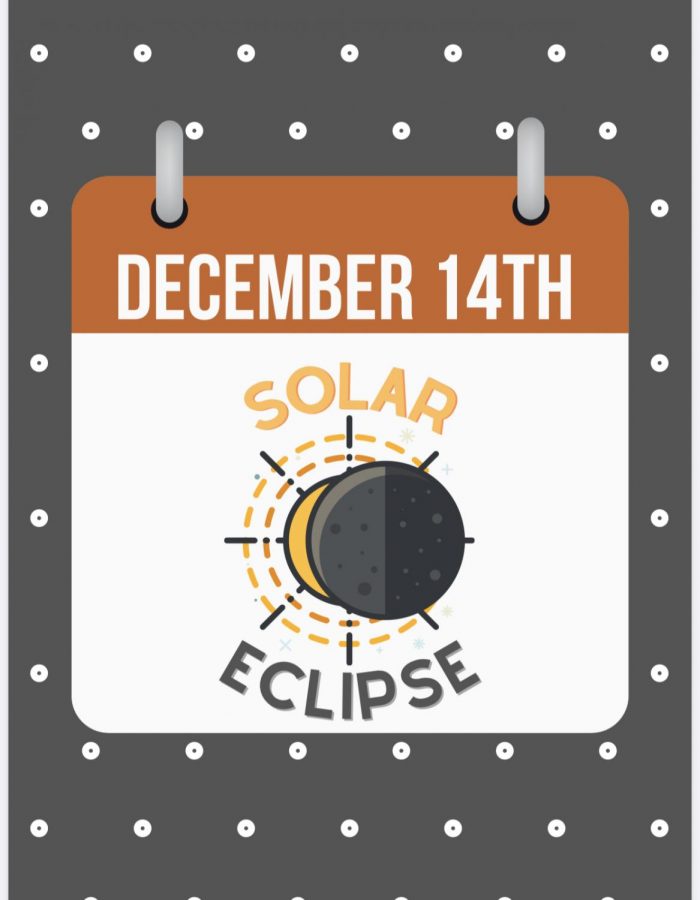Solar Eclipse Guide 2020
December 13, 2020
On Monday, Dec. 14, parts of South America can expect to see the only solar eclipse of the year.
These spectacular events occur when the Earth’s shadow blocks the sun’s light, leaving only the outermost layer of the sun, the corona, visible. Solar eclipses create a 360 sunset-like effect, making plants and animals think it is dusk. It remains known as one of the most impressive feats in nature.
The solar eclipse will start its journey in the Pacific Ocean, making its first appearance as a lunar eclipse around Chile at 11:38 a.m., according to a NASA fact sheet. This solar eclipse — which occurs when the moon entirely blocks the sun and is also known as totality — will last for two minutes and four seconds in Saavedra, Chile, at 1 p.m.
NASA will broadcast the eclipse’s path on NASA T.V. The 90-kilometer journey will pass Chile, moving further east towards Salina del Eje, Argentina, where it will end at 1:25 p.m. local time. However, few people have the opportunity to watch the eclipse in-person, due to its concentration in parts of South America.
According to NASA, those outside of the path of totality may see a partial solar eclipse, which involves the moon passing over part of the sun. To double check your location on the eclipse’s path, look at NASA’s map here.
When looking to view the eclipse, be sure to implement safety precautions. For example, you should not look directly at the sun, and make sure to get glasses with solar filters, known as “eclipse glasses.” For more information, look at NASA’s “Eclipse 101” page.
The last annular eclipse was June 21, 2020. The annular eclipse, which did not block out the sun completely, was seen in parts of Asia and Africa. However, the last complete solar eclipse occurred on July 2, 2019, which was also seen in South America.
Although the next annular eclipse will occur on June 10, 2021 and will be seen in Canada, Greenland and Asia, the next total eclipse will happen on Dec. 4, 2021.
If you can see it, go grab your solar filter glasses or telescope and take a look at the solar eclipse.









